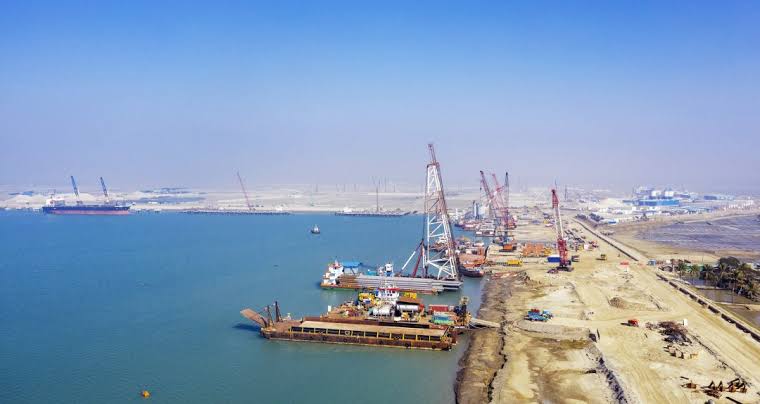A new era in Bangladesh’s maritime trade is about to begin at Matarbari in Maheshkhali, Cox’s Bazar.
On April 22, Tuesday, Chattogram Port Authority (CPA) is set to sign a final agreement with two renowned Japanese companies, Penta-Ocean Limited and TOA Corporation, to begin construction of the country’s first deep-sea port. This marks the start of the project, which was approved five years ago.
Funded by the Japan International Cooperation Agency (JICA), the project was initially estimated at Tk17,777 crore, but due to land acquisition issues and the rising cost of the US dollar, the cost was revised to Tk24,381 crore at the 2024 ECNEC meeting. The first phase of the project, with an investment of Tk6,197 crore, aims to be completed by 2029.
Commodore SM Moniruzzaman, Chairman of the Chattogram Port Authority, said, “With Japan’s support, this project will lead Bangladesh’s maritime capabilities into a transformative era. We are working to complete the first phase by 2029.”
Once operational, Matarbari Deep Sea Port will allow large container ships to dock directly, a first for Bangladesh. While the Chattogram Port currently accommodates ships with a maximum depth of 10 meters and a length of 200 meters, Matarbari will handle vessels with a 16-meter draft and a capacity of nearly 8,200 TEUs.
This will eliminate the need for transit through Singapore, Colombo, or Malaysia for exports to Europe and America, saving approximately 16 to 17 days in transit time. Additionally, shipping costs per container will drop from around $3,000 to below $1,300.
Mohammad Omar Faruk, Secretary of the Chattogram Port Authority, stated, “Construction work will begin immediately after the agreement is signed.
Land acquisition and feasibility studies for the second phase have already started. The third phase will involve acquiring tugboats, pilot boats, and other necessary vessels.”
Syed Mohammad Arif, Chairman of the Bangladesh Shipping Agents Association, commented, “Matarbari will not only serve Bangladesh but will also become a regional transshipment hub. Feeder ships will begin operating from Kolkata, Haldia, Nepal, and Bhutan. This will present a major opportunity for Bangladesh to earn foreign currency.”
The Chattogram Port Authority also reported that the 14.3-kilometer long navigational channel, originally constructed for the Ultra Super Critical Coal-Fired Power Plant at Matarbari (1,200 MW), is now being used for port operations. So far, nearly 33 lakh tons of cargo have been transported via 161 ships.
To connect the port to the mainland, the Roads and Highways Department is planning to construct a 28-kilometer-long access road, which will further enhance the speed and efficiency of cargo transport.
The successful implementation of this project will not only strengthen Bangladesh’s maritime trade but also place it in a crucial position on the trade map of South Asia.
Experts believe that Matarbari Deep Sea Port will be a game-changer for the country, taking Bangladesh’s economy to new heights in the 21st century.
By Abdur Rashid Manik
File Photo










